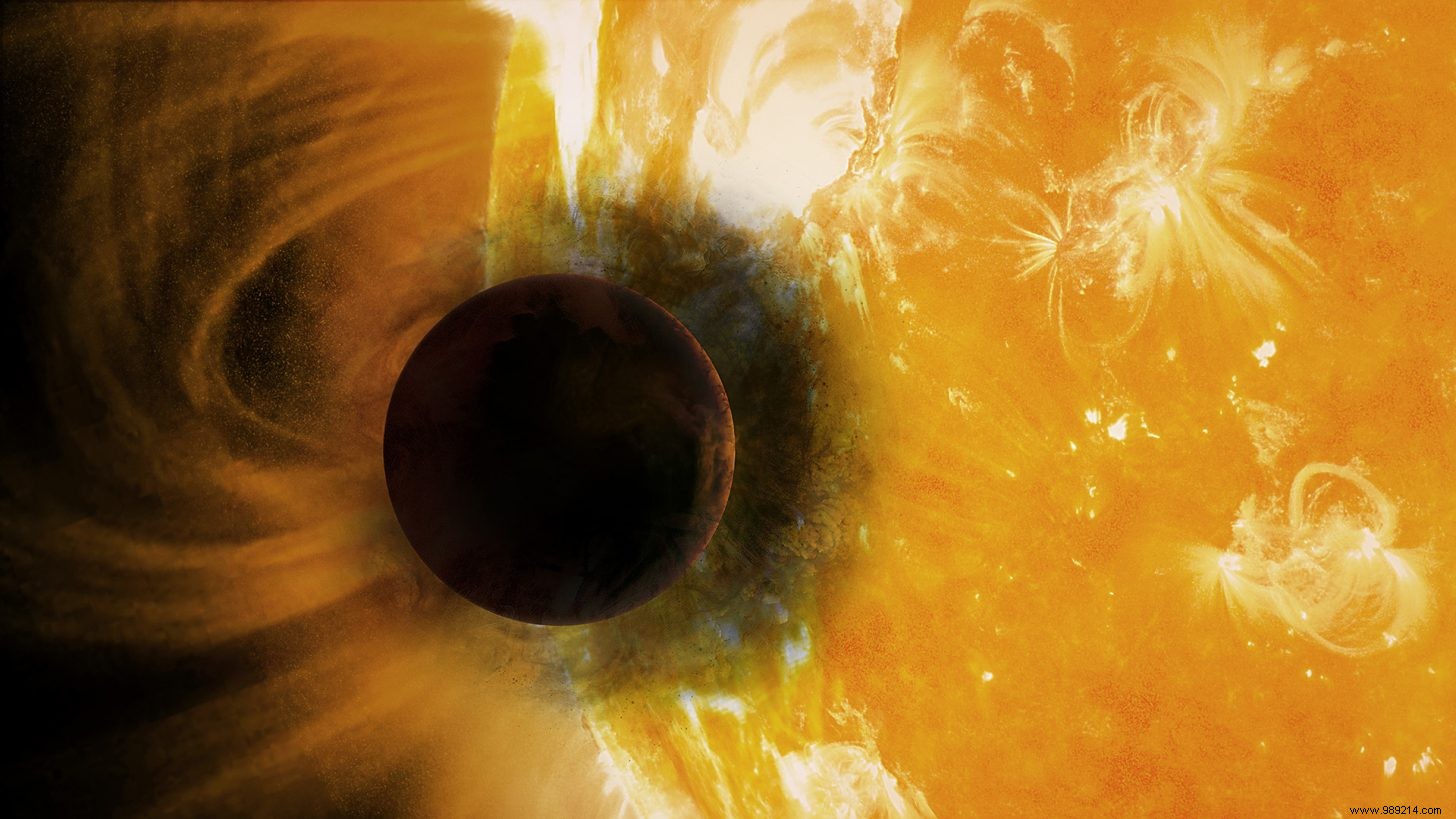In the Universe, gas giants could form "more easily" than previously thought, suggests a study focused on WASP-107b. You will find this "cotton candy" planet, so called because of its low density, about 211 light-years from Earth.
The solar system is made up of diverse and varied planets. You will find rocky worlds like Venus, Mercury, Mars, Earth or even gas giants like Jupiter and Saturn, and icy giants such as Neptune or Uranus. Finally, our dear Sun is also home to a few dwarf planets like Pluto or Ceres. But however heterogeneous the workforce of our system, one type of planet is not represented. They are called the "Super-Puffs", or "cotton candy" planets.
These worlds, which are characterized by very low density, are very rare in the Universe. WASP-107b, orbiting an orange dwarf star 211 light-years away from Earth towards the constellation of Virgo, is one of them. Discovered in 2017, this strange planet has just been the subject of more in-depth analysis. This work is published in The Astronomical Journal .
For this study, astrophysicist Caroline Piaulet and her team from the University of Montreal relied on four years of observations, signed by the Keck Observatory (Hawaii ) to measure the motion of the star in response to the gravitational tug of the orbiting exoplanet. In this way, they were able to refine the estimates of its mass. Result:WASP-107b is slightly smaller than Jupiter, but its mass is 10% less to his, giving this world a density of only 0.13 grams per cubic centimeter.
With these new calculations, the team then carried out a detailed analysis of the structure of WASP-107b. To their surprise, they discovered that the solid core of the exoplanet could not exceed about 4.6 times the mass of the Earth . This means that more than 85% of the mass of the exoplanet is in its puffy atmosphere.
Furthermore, we know that this planet evolves very close to its host star, completing a turn in just 5.7 days . As a result, it is naturally very hot on the surface:462 degrees Celsius, but more importantly, its atmosphere begins to evaporate.
The question is, "how could such a low density planet form?" And how has it prevented its huge layer of gas from escaping so far, especially given the planet's proximity to its star? » , asks the astrophysicist.

So far, our understanding of the formation of gas giants has been based primarily on the ones we can study most easily:Saturn and Jupiter.
They both have cores at least ten times more massive than Earth, so astronomers thought such a massive core was a prerequisite for the formation of a gas envelope. In other words, we believed that such a mass was necessary at the core level to trigger sufficient accretion of matter, before the proto-planetary disk of a newborn star was completely stripped of it. However, WASP-107b shows a different formation pathway.
“ For WASP-107b, the most plausible scenario is that the planet formed far from the star , where the gas in the disc was cold enough that gas accretion could occur very quickly ” , suggests Eve Lee, co-author of the study. “ The planet could have then migrated to its current position, either through interactions with the disk or with other planets in the system ” .
During their observations, the researchers also isolated the presence of a second exoplanet – WASP-107c – evolving much further from its star, completing an orbit in 1088 days. This orbit is also extremely eccentric, or oval in shape, suggesting a gravitational interaction with another body. In this case, it would be WASP-107b.
The researchers plan to continue work on WASP-107b with more sensitive instruments in the future, such as the James Webb Telescope, in order to better understand the mechanisms of planetary formation.